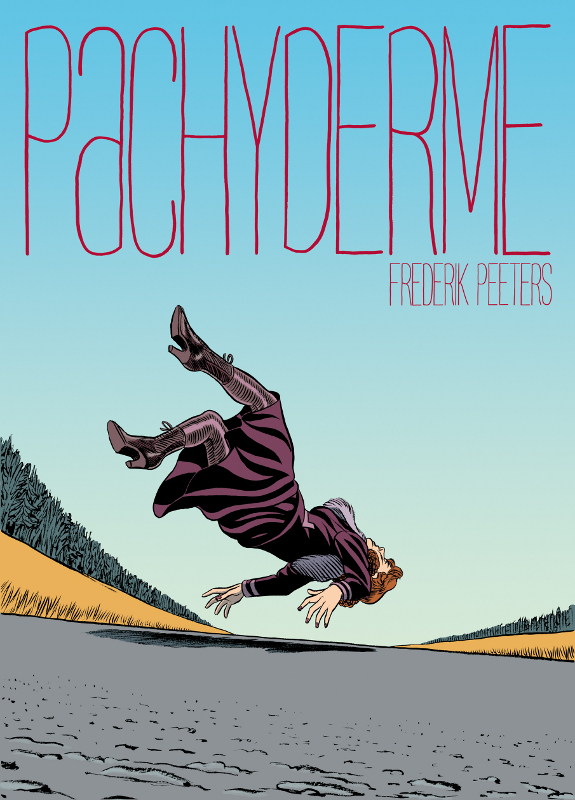Frédérik Peeters’ Pachyderm, which I’ve written about at Weird Fiction Review, is now available in English from Self-Made Hero.
“The book is very atmospheric and takes place in Switzerland during the ’50s. It tells the story of a woman who is married to a diplomat and cannot have children. Something happens to the husband early in the book and she takes the opportunity to reclaim her freedom and independence.â€
Another book of his I highly recommend is his series with Wazem called Koma, now available in English in a collected edition from Humanoids. It’s a fun romp with an instantly endearing heroine—a steampunk Matrix with chimneysweeps.
Here are some things I learned about him from Chris Thompson’s 2011 piece at PopCultureHound:
- Peeters is an avid reader, especially when it comes to sci-fi. He read a lot of Ray Bradbury, Brian Aldiss, J.G. Ballard, and others growing up. One of his goals is to create his own brand of ‘Franco science-fiction’.
- He was also influenced a lot by cinema before he discovered comics, particularly Stanley Kubrick (2001) and Ridley Scott (Blade Runner). Star Wars and Star Trek were not big influences, though he does acknowledge their presence in his early years.
- Comic influences came later on in the form of Moebius, Hergé, Charles Schulz, and others. Later he discovered other European artists, including Jean-Claude Forest (Barbarella). He is still very fond of Tintin and feels it stands up even today.
- His manga influences started with Otomo’s Akira, but he soon discovered Tezuka (Astro Boy), Masumoto (GoGo Monster), Urosawa (20th Century Boys), and more. Ideally he’d like to achieve a marriage between manga and classic European storytelling.
- Lupus, his sci-fi epic, was published as four massive volumes by Atrabile in Europe. It took Peeters four years to complete and has yet to be translated into English.
- Peeters doesn’t like to know the whole story ahead of time – it becomes boring to him. He prefers to explore with the characters and make discoveries as he goes along. For example, he’ll write 10 pages, then be thinking about the next 10 while he’s drawing those ones. It’s a very organic way to work.
- Some original art was being passed around the audience… a lot of Peeters’ work is drawn in segments, almost like comic strips or frames, which are then stuck together to form complete pages.
- Pachyderm was his homage to the American comedies of the ’30s and ’40s. They are one of his secret passions, though he doesn’t have the same level of wit as Billy Wilder and others of the time. He likens Pachyderm to a three-legged chair – it’s not comfortable or easy to read, but it leaves a lasting impression on the reader (or so he hopes). It’s also quite a surreal book with lots of illusion involved, so in many ways he considers it an experiment just like Blue Pills.
